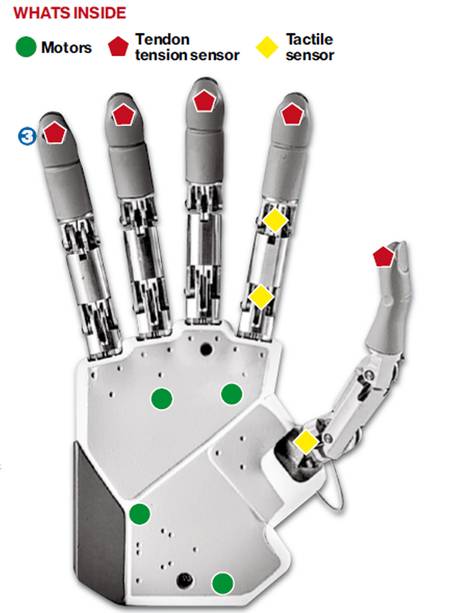A project that started out as a special effect prosthetic has transformed into a potentially life changing technology that could help tens, even hundreds, of thousands of people live higher quality lives!
After seeing this YouTube video by Ivan Owen, a Washington based prop maker, a South African carpenter by the name of Richard Van As had an idea.
Van As, who had lost the fingers on his right hand in an work related accident, approached Owen with the idea of collaborating to build Van As some new, working fingers. The two came up with a rather ingenious, and cost effective solution:
Thanks to the pair continually blogging the progress of the project, Ivan Owen was contracted to build a full hand prosthetic for a five-year-old boy, Liam. Liam was born with amniotic band syndrome, a congenital condition that meant the boy was born without any fingers on his right hand.
The final hand was delivered just over a month ago and it’s quite a marvel. The hand is controlled by a series of cables and bungees that respond to fine movements of the hand, wrist and arm, affording its recipient,some remarkably fine control.
More amazingly, the vast majority of the hand is 3D printed for a tiny fraction of the cost of a regular prosthetic. Although the hand has been designed to fit a small child, Owens and Van As say,
“Using Makerware, it could be scaled to fit a wide range of individuals. The only thing that would need to be changed is the size of the bolts purchased from a hardware store. The design is open source and in the public domain. We encourage anyone who can make use of this design for any purpose to do so”.
You can find the free 3D printing pattern for the hand, HERE.
Related news…

In related news, later this year an amputee in Rome will be the first fitted with a new generation of prosthetic hand that has advanced sensory capabilities. Electrodes in the hand will be attached to two main nerves in the arm – the median and ulnar nerves – to give bi-directional feedback to and from the hand.
What this means in non-scientific terms is that the hand will be the first prosthetic to offer real time sensory feedback for grasping. This has allowed users to much better modulate the strength and complexity of grip, giving users a wider range of actions and control. If the trial is a success, the developers hope to have a full working model within two years.
Ain’t technology wonderful :)






